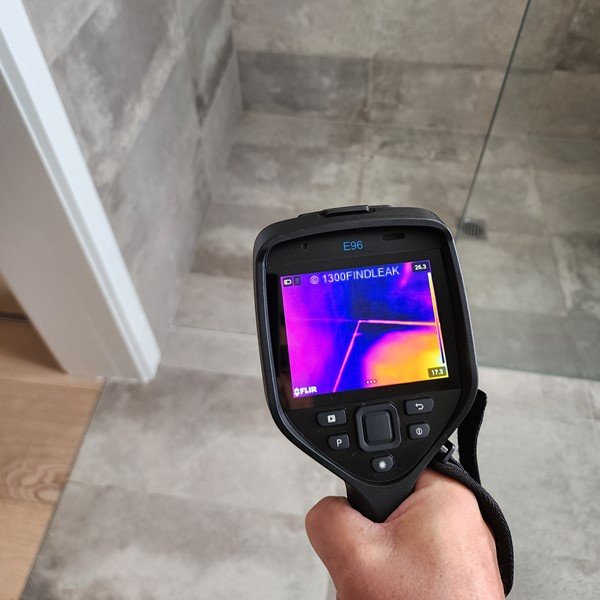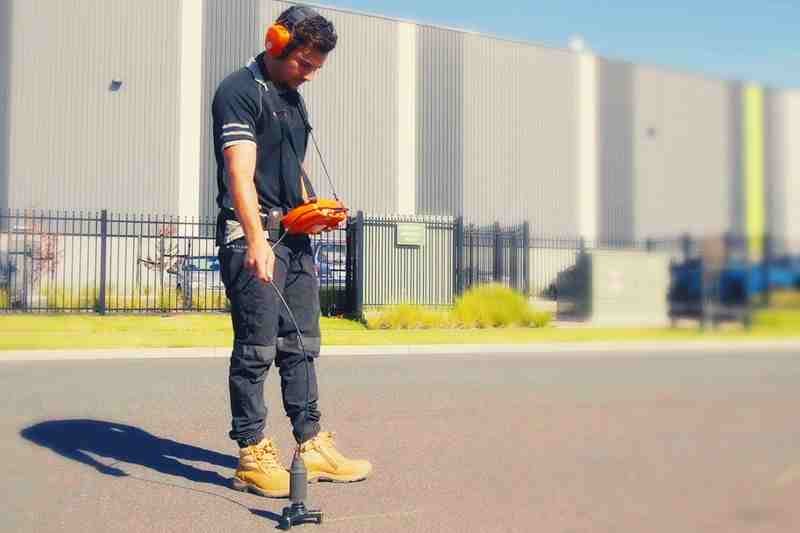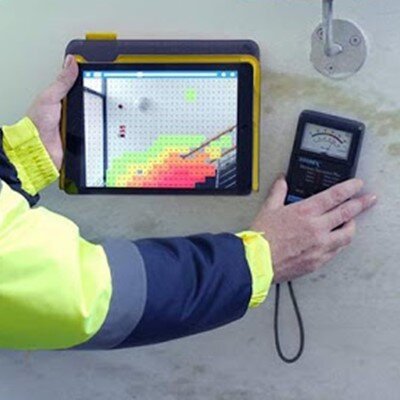Water Damage and Mould Detection
SERVICES | 1300 FINDLEAK
Comprehensive Water Damage Detection and Repair
At 1300 FINDLEAK, we specialize in identifying hidden water damage in homes and businesses, using advanced techniques to protect your property and prevent costly repairs.
Professional Mould Detection for Health and Safety
Our mould detection services identify harmful mould growth caused by moisture issues, ensuring a safe environment for your family or employees.
Understanding the Complex World of Leak Detection in Australian Buildings
When it comes to managing and repairing water damage in Australian buildings, the challenges can be significantly complex, especially concerning the detection and diagnosis of the underlying causes. While many leak detection companies excel at identifying obvious issues like burst pipes, a deeper understanding is required to unravel the intricate causes of water damage and mould. This is particularly true in newer constructions that might be over-insulated and lack adequate heating and ventilation, especially in critical areas like kitchens and wet zones.
-
Newer Australian buildings often face issues due to over-insulation and insufficient ventilation. While insulation is crucial for energy efficiency, excessive insulation can trap moisture. This is exacerbated in the absence of adequate heating and ventilation, creating the perfect environment for mould and bacteria to thrive. In wet areas, such as bathrooms and kitchens, the moisture generated daily from showers and cooking can accumulate, leading to persistent dampness that encourages mould growth.
-
Multi-level structures introduce additional complexities in leak detection due to their internal stormwater and wastewater networks. These systems often involve insulated pipes that traverse multiple floors, discreetly carrying water across considerable distances. Furthermore, the architectural design of concrete slabs in these buildings often includes various offsets and rebates, known as transitions, which can inadvertently facilitate water transport if not properly sealed.
-
Water damage in buildings can manifest in numerous ways, ranging from subtle water spots that mar surfaces over time to catastrophic flooding resulting from burst pipes. The intruding water initiates a series of destructive processes including the rotting of wood, rusting of steel, swelling of composites, and the dreaded mould growth. Each scenario demands a unique approach for identification and remediation.
-
The coverage of water damage restoration costs by insurance policies can vary widely in Australia. This uncertainty often adds an additional layer of complexity to the management of water damage, making it imperative for property owners to understand and actively manage the risks associated with water ingress.
-
Given these complexities, it's clear why specialized skills and advanced technologies are crucial for effective leak detection. Techniques such as thermal imaging, moisture surveys, and advanced acoustic listening devices are not just tools but necessities in pinpointing the exact locations and causes of leaks. This precise detection is the first critical step in preventing further damage and effectively managing repairs.
-
The reason many leak detection firms struggle to identify the real causes behind water damage and mould lies in the subtleties of building science and the specific environmental factors of each site. Without a deep understanding of how buildings are constructed and how they interact with natural elements, it's challenging to diagnose and resolve the underlying issues accurately.
Certified, Experienced Technicians for Reliable Service
Our team of certified technicians ensures thorough, professional inspections with a focus on accuracy and quality.
Conclusion
In summary, effective management of water damage in Australian buildings requires more than just identifying the obvious leaks. It demands a comprehensive understanding of building dynamics, advanced diagnostic tools, and a proactive approach to building maintenance and repair. For those facing such challenges, engaging with a leak detection specialist like 1300 FINDLEAK, who understands the intricacies of modern and complex building structures, is essential. This expertise ensures not only the identification but also the correct diagnosis and resolution of the underlying causes of water damage and mould, safeguarding your property's integrity and value in the long run.
Voted #1 Leak Detection Specialist By Our Partners
Comprehensive Water Leak Detection Services for Homes, Offices, and Commercial Buildings
From residential homes to commercial buildings, our water leak detection services cover all your needs, ensuring precise and efficient leak solutions Australia wide. Are you worried about water leaks in your home or business? Our technicians use advanced tools to find leaks in your property. These tools include moisture sensors, flood sensors, and water flow sensors. The technicians are skilled in using these tools to detect leaks in pipes, walls, ceilings, and other areas. Our leak detection services find water leaks without causing damage to your property. We give you reports and advice on how to fix the problem and stop leaks from happening again. Choose 1300 FINDLEAK for expert water leak detection in Australia. Contact us now to schedule an appointment or request more information about our services.
-
Water leaks in your property can cause damage to your home or business. They can also pose health risks to you, your family, or employees.
Leaks can originate from a variety of sources, including burst pipes, faulty plumbing, roof damage, and foundation issues. Even small leaks can cause long-term damage, such as mold growth and water damage to walls, ceilings, and floors. That's why addressing water leaks as soon as we detect them is essential.
At 1300 FINDLEAK, we find and fix water leaks to prevent serious damage. Our plumbers find and fix leaks fast using advanced technology, minimizing disruption to your daily life or business. We also provide comprehensive reports and recommendations for repair, so you can take the necessary steps to prevent future leaks. Don't let water leaks go unnoticed - contact us today to schedule an inspection and protect your property from water damage.
-
Water leaks in residential properties can be a major concern for homeowners. Leaks can damage walls, floors, and ceilings, and cause mold and harmful bacteria to grow. It's important to address water leaks as soon as possible to prevent further damage and avoid potential health risks.
At 1300 FINDLEAK, we offer professional water leak detection services for residential properties. Our team of qualified technicians uses advanced tools and equipment to detect leaks in your home's plumbing system. We understand the urgency of water leaks and offer 24/7 emergency services for burst pipes and other urgent plumbing issues. We also provide detailed reports and recommendations for repair, so you can take the necessary steps to prevent future leaks.
Choose 1300 FINDLEAK for expert water leak detection and repair services for your residential property. Contact us now to schedule an appointment or request more information about our services.
-
Water leaks can be a significant concern for commercial property owners, particularly in large buildings such as apartment complexes. Leaks can cause damage to walls, ceilings, and floors, as well as pose a potential hazard to the building's occupants.
At 1300 FINDLEAK, we specialize in providing commercial water leak detection. Our team of experienced technicians uses advanced tools and equipment to detect leaks in plumbing, roofs, and foundations. We know what commercial properties need. We provide services for fire safety, apartments, dampness, water in basements, and other problems that commercial properties have.
What is Condensation?
It is the result of warm, water vapour filled air condensing when it comes into contact with cold surfaces!
-
The main cause of condensation is a lack of air ventilation in the property. Modern homes are designed to be energy efficient, however, improvements like increased insulation, double glazing have the unintended consequence of sealing damp air within the property. This allows condensation problems to fester and create damp, musty, and unhealthy atmospheres.
In addition to the lack of ventilation, our own behaviour contributes to excessive moisture and condensation in the home. Common and unavoidable daily activities such as showering and cooking release lots of humid air into the atmosphere which, if not allowed to escape outside and disperse will likely result in condensation.
-
Condensation has the potential to lead to variety of problems such as:
Visible damp patches in plaster and along walls
Unsightly peeling decorations
Damage to fabrics
Damp and rot issues on timbers and window frames.
Potentially hazardous black mould growth
At its most severe condensation can even result in permanent damage to plaster and timber.
-
Most condensation problems can be solved by taking action to prevent the build-up of warm, damp air that causes condensation. Generally, this is a two-step process, principally you should attempt to reduce the amount of humid air you release into the property, and secondly, you should try to improve the ventilation to keep rooms fresh and dry.
However, more serious and persistent condensation problems may require professional solutions in order to ensure that the issue is properly dealt with.
Ceiling Mould & Remediation Guide
Ceiling mould can arise from humidity or direct liquid moisture, such as plumbing failures or roof leaks. Warm, moisture-rich air can condense on cool ceilings, leading to mould. In contrast, ghosting, which resembles mould, occurs when dust and soot particles adhere to the ceiling in straight lines due to attic framing.
-
Mould: Usually black and may show fungal structure filaments. It requires higher humidity than ghosting.
Ghosting: Often appears in straight lines, caused by particles sticking to cold spots.
Cigarette Smoke: Causes staining similar to ghosting, mainly due to missing insulation areas.
-
Humidity-Based Mould Symptoms:
More mould at room's perimeter.
Room is on the top floor with a poorly insulated attic.
Roof Leak Mould Symptoms:
Brown/yellow discoloration.
Mould follows a circular pattern and is localized.
-
Humidity-caused mould is visible from the room's interior.
Liquid-based mould often grows more on the sheet rock's backside.
Unique Mould Challenges: Specialized rooms, like home theaters with sound-deadening materials, can present unique mould challenges due to their construction.
-
Determine if the ceiling contains insulation. Top-floor ceilings are usually insulated.
Uninsulated ceilings allow faster drying and are less prone to mould.
Decide on repair or replacement based on the mould's cause. Liquid-caused mould often needs replacement, while condensation-caused mould may just require repair.
Starting from $398 including GST for the first hour, with an additional charge of $168 for every extra hour. The final cost depends on your location. Most inspections only take one hour, but if additional time is needed, the technicians will inform you before proceeding. Book online or free call 1300 FINDLEAK (1300 346 353).
Non-Invasive Leak and Moisture Detection Methods
Using non-invasive tools like thermal imaging and moisture surveys, we locate sources of water damage without disrupting your property.
Thermal imaging cameras don’t “see” water, but rather can visualize the impact water has on the temperature of surfaces around them due to the evaporation process.
Electro Acoustic Technology. Leaks create a distinctive sound as water leaves the pipe, with smaller leaks producing a higher frequency and larger leaks a lower frequency sound.
Combined with a specific electronic leak detector, Tracer Gas enables qualified technicians to detect much smaller leaks than they can with the Oxygen Free Nitrogen method.
Excess moisture left within a building can cause damage to structural materials such as rot, mould, reduced insulation values, and failure of flooring, roofing, and wall support.

Why Choose 1300 FINDLEAK for Water Damage and Mould Detection?
Trusted by homeowners and businesses alike, we provide accurate, reliable detection services backed by a commitment to quality and customer satisfaction.
Advanced Thermal Imaging for Precise Moisture Detection
Our thermal imaging technology allows us to identify hidden moisture, preventing further water damage and potential mould growth.
We're family-owned and run providing you with personalised service where the customer always comes first and is always right. When it comes to leak detection services, Australia can rely on us to care about your home and treat it like it is our own.
No more scary bills! We offer transparent and fixed prices for each job so you can rest easy knowing exactly how much you'll be paying. You can even book online or call us directly for a hassle-free experience.
At 1300 FINDLEAK, we are committed to providing our clients with reliable, professional, and affordable leak detection services in Australia.
Proudly Serving Australia:
Seeking water damage and mould detection? We service a vast area including Melbourne, Mornington Peninsula, Werribee, Gippsland, Bendigo, Ballarat, and Shepparton. We also cover areas outside Victoria including Sydney, Wollongong, in Brisbane and the Gold Coast.
We’re here to help!
Our licensed and highly experienced leak detection experts are ready to inspect your property and resolve any gas, water, or pool leaks you may have.
Not sure which service you need? Simply free call us at 1300 346 353, and our friendly team will gladly help schedule an appointment at your convenience. We're here to make the process easy and stress-free for you!
Choose 1300 FINDLEAK for expert water damage and mould detection solutions, utilizing advanced techniques like thermal imaging and moisture survey. Ensure a water damage and mould-free home with our decade-long expertise.
1300 FINDLEAK is a national leak detection and repair service. We cater to a wide range of clients, including plumbing companies, property maintenance companies, real estate agents, councils, and water suppliers. We have experts who can fix any gas or water leak damage using their skills and knowledge. No job is too big or small, so call the leaders in gas, water and pool leak detection, residential or commercial today!











































